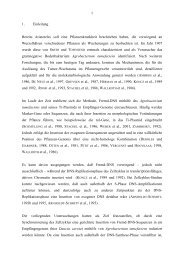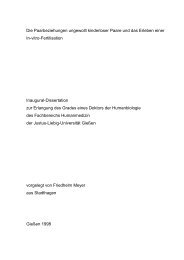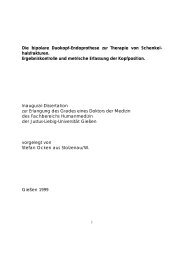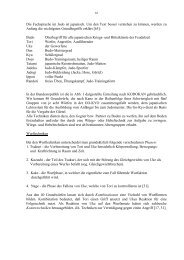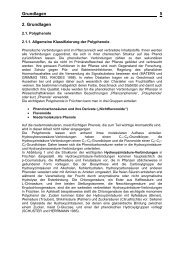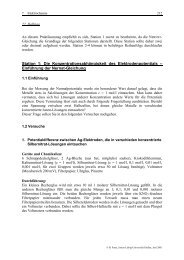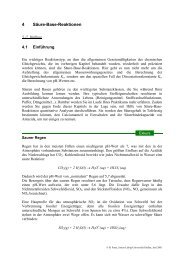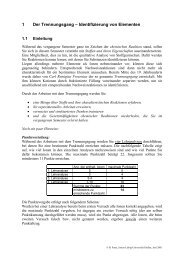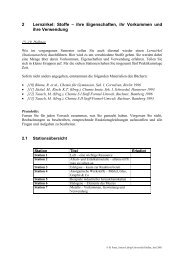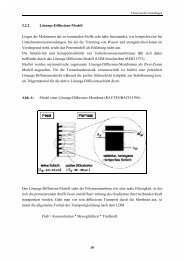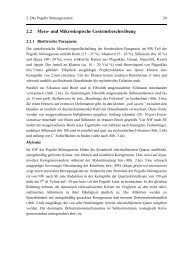Effects of diabaticity on fusion of heavy nuclei in the dinuclear model ...
Effects of diabaticity on fusion of heavy nuclei in the dinuclear model ...
Effects of diabaticity on fusion of heavy nuclei in the dinuclear model ...
Create successful ePaper yourself
Turn your PDF publications into a flip-book with our unique Google optimized e-Paper software.
to <strong>the</strong> <strong>on</strong>es obta<strong>in</strong>ed <strong>in</strong> adiabatic calculati<strong>on</strong>s because we took <strong>the</strong> width Γ k <str<strong>on</strong>g>of</str<strong>on</strong>g> s<strong>in</strong>gle-particle<br />
states <strong>in</strong>to c<strong>on</strong>siderati<strong>on</strong>. This is observed <strong>in</strong> Figs. 5-1and 5-6 compar<strong>in</strong>g <strong>the</strong> values <str<strong>on</strong>g>of</str<strong>on</strong>g> M εε<br />
at <strong>the</strong> touch<strong>in</strong>g c<strong>on</strong>figurati<strong>on</strong> <str<strong>on</strong>g>of</str<strong>on</strong>g> <strong>the</strong> <strong>nuclei</strong> for <strong>the</strong> reacti<strong>on</strong> 110 Pd+ 110 Pd. Due to <strong>the</strong> effect<br />
<str<strong>on</strong>g>of</str<strong>on</strong>g> <strong>the</strong> width <str<strong>on</strong>g>of</str<strong>on</strong>g> <strong>the</strong> s<strong>in</strong>gle-particle states, <strong>the</strong> occupati<strong>on</strong> probabilities for s<strong>in</strong>gle-particle levels<br />
with zero widths are distributed over more levels. This effect partially destroys <strong>the</strong> difference<br />
between <strong>the</strong> <str<strong>on</strong>g>diabaticity</str<strong>on</strong>g> and a<str<strong>on</strong>g>diabaticity</str<strong>on</strong>g> at cross<strong>in</strong>gs (or pseudo-cross<strong>in</strong>gs) <str<strong>on</strong>g>of</str<strong>on</strong>g> <strong>the</strong> s<strong>in</strong>gle-particle<br />
levels. We want to stress that <strong>the</strong> differences between <strong>the</strong> diabatic and adiabatic s<strong>in</strong>gle-particle<br />
levels appear <strong>on</strong>ly near <strong>the</strong> cross<strong>in</strong>g po<strong>in</strong>ts. Moreover, <strong>the</strong> distributi<strong>on</strong> <str<strong>on</strong>g>of</str<strong>on</strong>g> <strong>the</strong> diabatic occupa-<br />
ti<strong>on</strong> numbers n(ɛ k) and <strong>the</strong> derivatives f k approaches <strong>the</strong> <strong>on</strong>es obta<strong>in</strong>ed <strong>in</strong> <strong>the</strong> adiabatic case<br />
for fixed values <str<strong>on</strong>g>of</str<strong>on</strong>g> ε, λ and excitati<strong>on</strong> energy <str<strong>on</strong>g>of</str<strong>on</strong>g> <strong>the</strong> system (Fig. 5-8). S<strong>in</strong>ce we showed <strong>the</strong><br />
similarity <str<strong>on</strong>g>of</str<strong>on</strong>g> <strong>the</strong> data obta<strong>in</strong>ed with adiabatic and diabatic levels us<strong>in</strong>g <strong>the</strong> same width, we can<br />
use diabatic s<strong>in</strong>gle particle states <strong>in</strong> fur<strong>the</strong>r calculati<strong>on</strong>s <str<strong>on</strong>g>of</str<strong>on</strong>g> mass parameters <strong>in</strong> order to simplify<br />
<strong>the</strong> numerical procedure.<br />
The obta<strong>in</strong>ed mass parameter for <strong>the</strong> neck degree <str<strong>on</strong>g>of</str<strong>on</strong>g> freedom is much larger than <strong>the</strong> <strong>on</strong>e<br />
obta<strong>in</strong>ed <strong>in</strong> <strong>the</strong> hydrodynamical <strong>model</strong> with <strong>the</strong> Werner-Wheeler approximati<strong>on</strong>. By apply<strong>in</strong>g<br />
<strong>the</strong> microscopical mass parameters we f<strong>in</strong>d a relatively stable neck dur<strong>in</strong>g <strong>the</strong> time <str<strong>on</strong>g>of</str<strong>on</strong>g> reacti<strong>on</strong>.<br />
In additi<strong>on</strong>, a large energy threshold due to <strong>the</strong> diabatic (structural) forbiddenness effect [35, 36]<br />
h<strong>in</strong>ders <strong>the</strong> moti<strong>on</strong> to smaller <strong>in</strong>ternuclear distances. Therefore, <strong>the</strong> DNS c<strong>on</strong>figurati<strong>on</strong> exists<br />
l<strong>on</strong>g enough, and <strong>the</strong>rmal fluctuati<strong>on</strong>s <strong>in</strong> <strong>the</strong> mass asymmetry coord<strong>in</strong>ate could develop and<br />
lead to fusi<strong>on</strong> and quasifissi<strong>on</strong>, which are <strong>the</strong> essential reacti<strong>on</strong>s <strong>in</strong> <strong>the</strong> DNS c<strong>on</strong>cept.<br />
77



